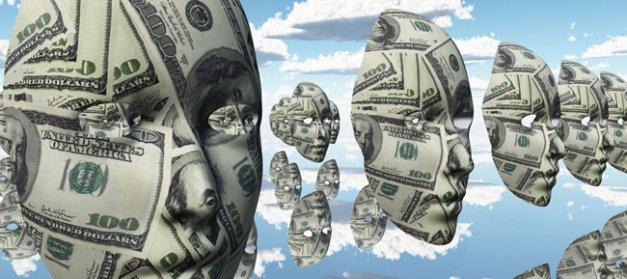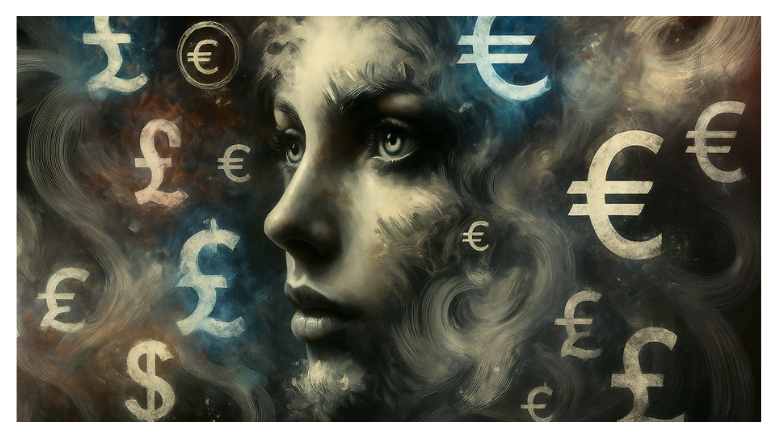The creative industry has long been celebrated as a space where passion, imagination, and innovation thrive. Yet, beneath its alluring surface lies a complex reality—a world marked by financial struggles, systemic challenges, and an enduring battle for recognition and fair compensation. While creatives contribute significantly to global culture and economies, their journey toward financial freedom is often fraught with economic obstacles.
At the heart of these struggles is the undervaluation of creative work. The creative industry is often romanticised as a realm of boundless imagination and passion, where artists, writers, designers, and creators bring beauty and meaning to the world. However, beneath this glossy exterior lies a darker narrative of economic struggles, societal stereotypes, and the relentless pressure to adapt to ever-evolving technologies. For many creatives, achieving financial freedom remains an elusive dream, tangled in a web of undervaluation, unpredictability, and systemic challenges that often tie into workplace culture and shifting social expectations.
This article delves into the harsh realities shared by artists and creators today, exploring the industrial economy, the persistent “starving artist” stereotype, the costs of a creative lifestyle, and the transformative yet precarious impact of new-age technologies. It examines the delicate balance between artistic integrity and financial independence through a philosophical lens, shedding light on the path forward for those navigating this complex terrain.
THE FINANCIAL STRUGGLES IN THE CREATIVE INDUSTRY
The creative industry is a major contributor to global economies, yet the artists powering it often struggle to receive fair compensation. Many creatives experience financial instability due to irregular income streams, fluctuating demand, and the persistent undervaluation of their work. Unlike traditional jobs with stable salaries, creative careers are often project-based or freelance, making it difficult to maintain financial security with access to loans, health insurance, and retirement plans. Many artists must rely on multiple income streams, side hustles, or unrelated day jobs to sustain their creative pursuits, leading to exhaustion and burnout.
The financial burden of training, equipment, and self-promotion further adds to the challenges, making it difficult for many to focus solely on their craft. Often, the emotion-creativity loop becomes a source of both inspiration and internal pressure.
One of the biggest challenges is monetisation. Clients and companies frequently prioritise cost over quality, pressuring creatives to accept lower rates or unpaid opportunities under the guise of “exposure.” Wealth distribution within the industry is also highly uneven—while a select few achieve significant success, the majority struggle with financial disparities. Additionally, many creatives enter the industry without much financial literacy, complicating taxes, investments, and budgeting effectively. Without these essential skills, even the most talented individuals can become trapped in a cycle of business instability.
BREAKING THE “STARVING ARTIST” STEREOTYPE
The “starving artist” trope is deeply ingrained in societal consciousness, perpetuating the notion that financial struggle is an inevitable part of pursuing a creative career. This damaging notion not only discourages fair pricing for creative work but also undermines the value of artistic contributions. Many artists feel pressured to work for exposure rather than fair compensation, further perpetuating the cycle of undervaluation.
Challenging this stereotype requires a shift in mindset—both within the creative community and society at large—to recognise artistic work as valuable and deserving of equitable financial rewards. It’s time we move beyond the toxic positivity that glorifies struggle as a badge of honour.
To break free from this limiting belief, creatives must take proactive steps in shaping their financial futures. Setting fair prices and refusing to work for free is crucial in establishing professional respect. Building strong communities and collaborating with like-minded individuals can amplify their collective voice, ensuring that creative labour is valued. Additionally, advocating for financial literacy within creative education can empower artists to manage their income, budget wisely, and invest in their long-term success. By taking control of their financial narratives, creatives can redefine success beyond the outdated notion of the struggling artist.
THE HIDDEN COSTS OF A CREATIVE LIFESTYLE
Pursuing a creative career often demands significant sacrifices that extend beyond financial instability. Creatives are expected to dedicate long hours to their craft, frequently without guaranteed returns, leading to immense pressure to maintain an illusion of success. This expectation can result in overspending, accumulating debt, and heightened financial stress. Additionally, many artists face opportunity costs, as they forgo traditional career stability in pursuit of passion-driven work, often without a financial safety net.
The toll of such sacrifices extends far beyond monetary concerns, affecting overall well-being and security. Here lies a frequent overlap between creativity and mental illness correlates, as burnout, anxiety, and depression become common under these pressures.
Beyond financial struggles, mental health challenges are a stark reality for many creatives navigating uncertain career paths. Anxiety, burnout, and self-doubt are common side effects of economic and social pressures within the creative industry. A constant need to present an image of success can be emotionally exhausting, especially in an era dominated by social media, where appearances matter more than ever. Many creatives struggle to balance their artistic ambitions without proper support systems.
Addressing these hidden costs requires a shift in societal expectations and better support structures that empower creatives to thrive artistically and financially.

TECHNOLOGY IN THE CREATIVE INDUSTRY: A DOUBLE-EDGED SWORD?
Digital technology has opened up unprecedented opportunities for artists to reach global audiences, monetise their work, and build communities. The rise of digital platforms, e-commerce, social media, NFTs, and AI tools has empowered creatives to share their work without traditional gatekeepers. These advancements have democratised access to the creative industry, allowing independent artists to gain visibility and financial independence without relying solely on major corporations or institutions.
However, these technological advancements come with challenges. While digital mediums provide exposure, they also demand constant content production, leading to creative burnout. Algorithms favour certain types of engagement, often prioritising virality over artistic depth, forcing many creators to tailor their work to platform trends rather than their artistic vision. Furthermore, platform fees, changing policies, and algorithmic unpredictability disproportionately benefit corporations, limiting artists’ control over their work. AI-generated content also raises ethical concerns, as it threatens traditional creative jobs and calls into question ownership and authenticity in the industry.
Creatives can harness technology to their advantage by diversifying income streams. Subscription-based platforms like Patreon, Kajabi, digital product sales, and Web3 innovations such as decentralised creative ownership provide new opportunities for financial stability. Understanding the technological landscape and strategically leveraging it can empower artists to maintain economic independence and artistic authenticity.
CREATIVITY VS CAPITAL IN THE CREATIVE INDUSTRY
Amid these challenges, a deeper question emerges: “Can financial freedom coexist with artistic integrity?” For many creatives, achieving economic stability requires compromises that can feel at odds with their artistic vision and values. The pressure to commercialise one’s work to remain financially viable can dilute creative authenticity, causing tension between art and commerce.
However, redefining wealth beyond monetary success can offer a more holistic perspective on financial independence. True wealth for creatives can encompass personal fulfilment, impact, and the freedom to pursue meaningful work on their terms. By leveraging technology wisely, advocating for fair compensation, and embracing new financial strategies, creatives can find a sustainable balance between economic security and artistic expression.
Achieving financial freedom in the creative industry requires a shift in mindset—one that prioritises value, innovation, and long-term sustainability over outdated notions of artistic struggle.
FINAL THOUGHTS
The journey toward financial freedom in the creative industry is challenging but not impossible. By dismantling outdated stereotypes, acknowledging the economic and emotional costs of a creative career, and strategically leveraging technology, creatives can build sustainable and rewarding paths. This way, they reshape their narratives and contribute to a broader redefinition of what it means to thrive in the creative world.
Financial literacy, advocacy for fair compensation, and community-driven support networks are crucial in reshaping the industry’s economic landscape. When artists recognise the value of their work and demand equitable treatment, they contribute to a broader shift—one that prioritises artistic excellence and financial security.
Ultimately, financial independence in the creative field extends beyond mere monetary gain; it is about reclaiming control over one’s career, making informed financial choices, and sustaining long-term creative fulfilment. Success in the evolving creative economy requires a balance of resilience, adaptability, and strategic planning. By embracing innovative economic models, redefining traditional markers of success, and fostering a mindset that values both passion and prosperity, artists can carve out a future where creative passion and financial stability are not at odds but mutually reinforcing.

